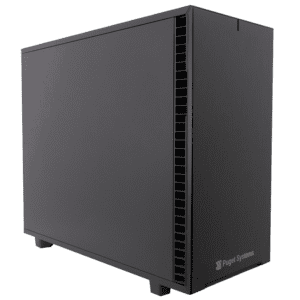In this post I’ll be going over details of Installing Ubuntu 18.04 including the NVIDIA display driver and, any one of the available desktop environments. I’ll do this starting from a base server install. I’ll go over a few possible pitfalls and end with a short discussion on the new netplan configuration tool for Ubuntu networking.
Install TensorFlow with GPU Support on Windows 10 (without a full CUDA install)
In this post I’ll walk you through the best way I have found so far to get a good TensorFlow work environment on Windows 10 including GPU acceleration. I’ll go through how to install just the needed libraries (DLL’s) from CUDA 9.0 and cuDNN 7.0 to support TensorFlow 1.8. I’ll also go through setting up Anaconda Python and create an environment for TensorFlow and how to make that available for use with Jupyter notebook. As a “non-trivial” example of using this setup we’ll go through training LeNet-5 with Keras using TensorFlow with GPU acceleration. We’ll get a setup that is 18 times faster than using the CPU alone.
Install TensorFlow with GPU Support the Easy Way on Ubuntu 18.04 (without installing CUDA)
TensorFlow is a very important Machine/Deep Learning framework and Ubuntu Linux is a great workstation platform for this type of work. If you are wanting to setup a workstation using Ubuntu 18.04 with CUDA GPU acceleration support for TensorFlow then this guide will hopefully help you get your machine learning environment up and running without a lot of trouble. And, you don’t have to do a CUDA install!
Build TensorFlow-GPU with CUDA 9.1 MKL and Anaconda Python 3.6 using a Docker Container
Building TensorFlow from source is challenging but the end result can be a version tailored to your needs. This post will provide step-by-step instructions for building TensorFlow 1.7 linked with Anaconda3 Python, CUDA 9.1, cuDNN7.1, and Intel MKL-ML. I do the build in a docker container and show how the container is generated from a Dockerfile.
Build TensorFlow-CPU with MKL and Anaconda Python 3.6 using a Docker Container
In this post I go through how to use Docker to create a container with all of the libraries and tools needed to compile TensorFlow 1.7. The build will include links to Intel MKL-ML (Intel’s math kernel library plus extensions for Machine Learning) and optimizations for AVX512.
How-To Setup NVIDIA Docker and NGC Registry on your Workstation – Part 5 Docker Performance and Resource Tuning
This should be the last post in this series dealing with the Docker setup for accessing the NVIDIA NCG Docker registry on your workstation. There are a couple of configuration tuning changes that you may want to make. These will improve performance and ensure that you have proper system “user limit” resources to handle large application and job runs with docker.
How-To Setup NVIDIA Docker and NGC Registry on your Workstation – Part 4 Accessing the NGC Registry
This post will go through how to get access to the NVIDIA NGC container registry on your workstation. The first 3 posts in this series gave instructions on how to install and configure a base Ubuntu 16.04 workstation system with Docker and NVIDIA-Docker for a usable work-flow. With that taken care of we can get setup to use the many useful docker images in the NGC container registry for your local system.
How-To Setup NVIDIA Docker and NGC Registry on your Workstation – Part 3 Setup User-Namespaces
In this post I’ll go through setting up Docker to use User-Namespaces. This is a very important step to achieving a comfortable docker work-flow on a personal Workstation. I will show you how to configure Docker so that instead of files and processes being owned by root they will be owned by your personal user account. This will make using Docker containers on your system safer and feel much the same as a “normally” installed application.
How-To Setup NVIDIA Docker and NGC Registry on your Workstation – Part 2 Docker and NVIDIA-Docker-v2
This post will build on top of the base systems setup described in Part1. We will go through installing,configuring and testing Docker and NVIDIA-Docker version 2.
How-To Setup NVIDIA Docker and NGC Registry on your Workstation – Part 1 Introduction and Base System Setup
One of my New Years resolutions was to adopt a Docker based workflow. I had also promised in my recent post on testing the Titan V that I would do a series of How-To’s on setting up docker and ultimately configuring and using the excellent NVIDIA NGC docker registry. This is the fist post of that series and covers the base system setup, motivation and references.
